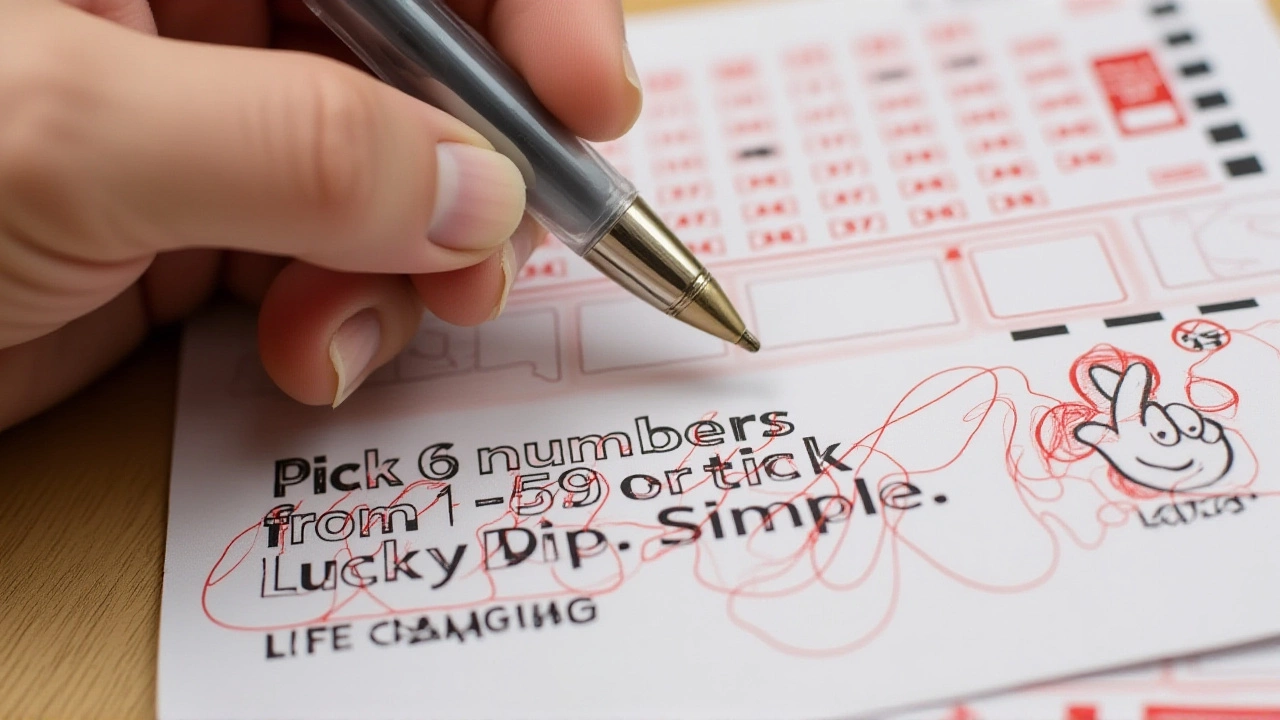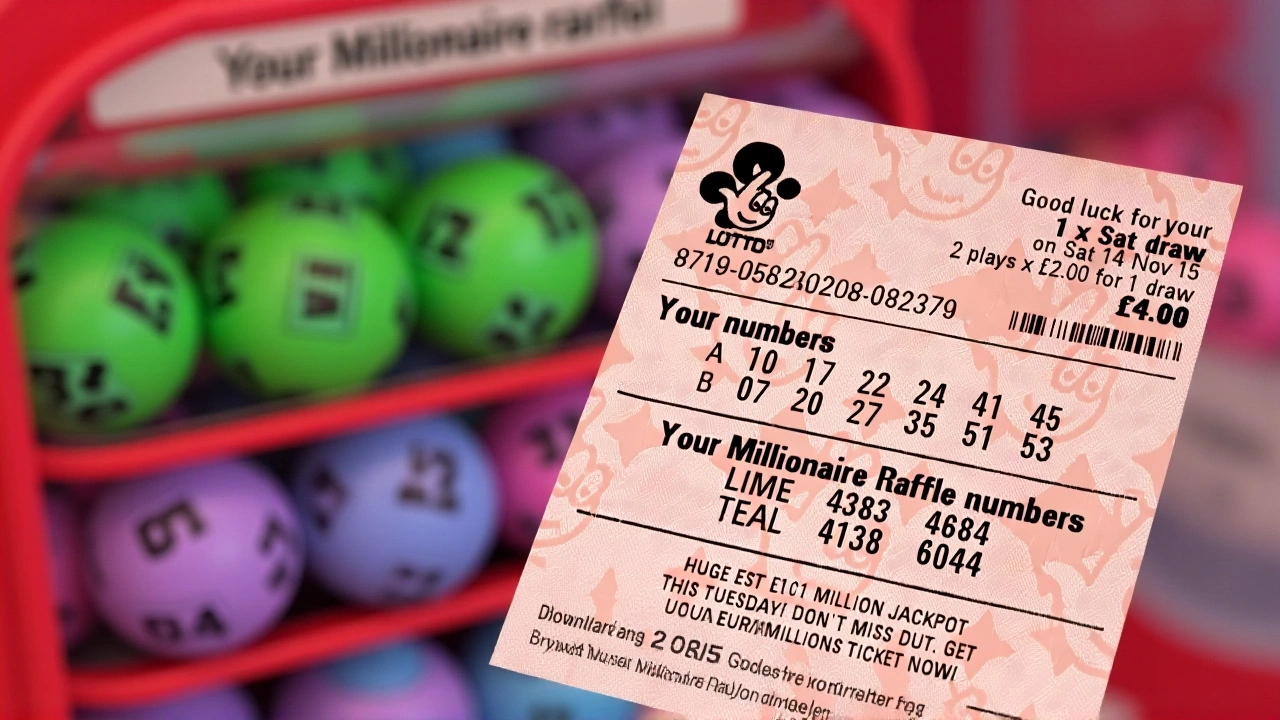When National Lottery held its Lotto draw No. 3,067United Kingdom on Wednesday, May 14, 2025, the ball‑set 7 and the famed Lancelot machine sang out a sequence that left the jackpot untouched. The six main numbers – 2, 14, 34, 37, 48 and 52 – came up alongside a bonus ball of 29, but no ticket matched the full house. That meant the £8,729,961 jackpot kept rolling over to the next draw, extending what’s already a quadruple‑rollover streak.
What the Numbers Looked Like
The draw sequence was a bit of theatre: the first ball released was 14, followed by 34, then 2, 52, 48 and finally 37, with the bonus 29 popping out last. When the National Lottery announced the results in ascending order, they read: 2, 14, 34, 37, 48, 52 plus the bonus 29. The same set of balls had been used for the previous Saturday’s draw, which had rolled over a £7,285,879 jackpot.
Behind the scenes, an independent adjudicator watched every spin, a safeguard that’s become routine since the Lottery’s 1994 launch. The Lancelot machine, named after the legendary knight, has been in service for years, its precision‑engineered balls ensuring each draw is as random as a shuffled deck of cards.
Prize Breakdown – Who Won What
Even though the top prize stayed elusive, 704,553 players walked away with something. The second‑tier – five main numbers plus the bonus – produced a single lucky ticket that pocketed £1,000,000. That’s a life‑changing sum, and it’s the kind of headline that fuels the “what if?” conversations at the local pub.
- Match 5 (no bonus): 36 winners, each receiving £1,750 (total £63,000).
- Match 4: 2,673 winners, £140 each (total £374,220).
- Match 3: 63,180 winners, £30 each (total £1,895,400).
- Match 2: 638,663 tickets that earned a free Lucky Dip for a future draw.
All together, the prize fund distributed across the tiers came to £3,332,620. That’s roughly 38% of the total revenue collected from ticket sales for that draw, a ratio the National Lottery has kept fairly steady over the last decade.
Thunderball – The Evening’s Side‑Show
While the Lotto stole most of the headlines, the Thunderball draw ran in parallel, also overseen by an independent adjudicator. The numbers drawn were 4, 7, 27, 32 and 37, with the Thunderball itself being 10. Hitting all five plus the Thunderball would have fetched a £500,000 top prize, but the winning ticket remained undisclosed at press time.
The Thunderball draw follows a slightly different format: players pick five main numbers from 1‑39 and a separate Thunderball from 1‑14. The odds of grabbing the top prize sit at 1 in 45 million – a long‑shot, but the lower‑tier prizes keep the game lively.

How to Claim – Deadlines and Details
If you think you’ve won, you’ve got until to claim your prize. That gives roughly six months from the draw date to get your ticket to a retailer, post it, or lodge a claim online. The National Lottery’s website and mobile app both let you scan or enter your numbers for instant verification.
For prizes under £500, the claim can usually be made at any authorised retailer. Anything above that, including the £1 million second‑tier win, requires a visit to a National Lottery regional office or a direct contact with the Lottery’s claims department. Identification and proof of purchase are mandatory – no photo‑ID, no payout.
Responsible Gaming – The ‘Dream Big, Play Small’ Message
The National Lottery has been pushing its “Dream Big, Play Small” initiative for years. The toolkit includes setting deposit limits, daily or weekly spend caps, and self‑exclusion options. Players can access these tools through the online account settings or by calling the dedicated helpline.
According to a 2024 report from the UK Gambling Commission, about 3% of regular lottery players self‑exclude each year, a figure that’s risen modestly since the rollout of the toolkit. The Lottery argues that a well‑regulated environment, coupled with clear messaging, helps keep the game fun rather than addictive.

What This Means for Future Draws
With the jackpot now stretched beyond £8.7 million, the next draw on May 17 is likely to see a surge in ticket sales. Historically, when a jackpot crosses the £8 million threshold, participation spikes by roughly 12‑15%. That can push the prize pool even higher, potentially breaking the £10 million barrier for the first time since 2022.
For the lucky winner who finally cracks the code, it’s not just about the money – it’s about the story that follows. Past jackpot winners have donated to charities, paid off mortgages, and even bought small islands (yes, that really happened). The ripple effect of a single win can be felt across families, communities, and sometimes, entire towns.
Frequently Asked Questions
How can I check if I won the Lotto draw?
Visit the official National Lottery website or open its mobile app. You can either scan the barcode on your ticket or manually enter the six numbers and bonus ball. The system will instantly tell you which prize tier, if any, you fall into.
What happens to the jackpot if there’s no Match 6 winner?
The jackpot rolls over to the next draw, adding the current draw’s prize fund to the existing pool. That’s why the May 14 draw’s £8,729,961 jackpot is now set to swell further for the May 17 draw.
Can I claim a prize if I bought my ticket online?
Yes. Online tickets are linked to your account, so you can claim prizes directly through the National Lottery portal. Larger winnings may still require identity verification, but the process is fully digital.
Are there any tax implications for winning the jackpot?
In the United Kingdom, lottery winnings are tax‑free. The prize is paid out without any deduction, but any subsequent interest earned on the money or investments made with it could be subject to tax.
What measures does the National Lottery take to ensure draw integrity?
Every draw is overseen by an independent adjudicator, uses certified ball sets, and is recorded on video for public transparency. The Lancelot machine undergoes regular maintenance and calibration, and the entire process is audited by the UK Gambling Commission.
